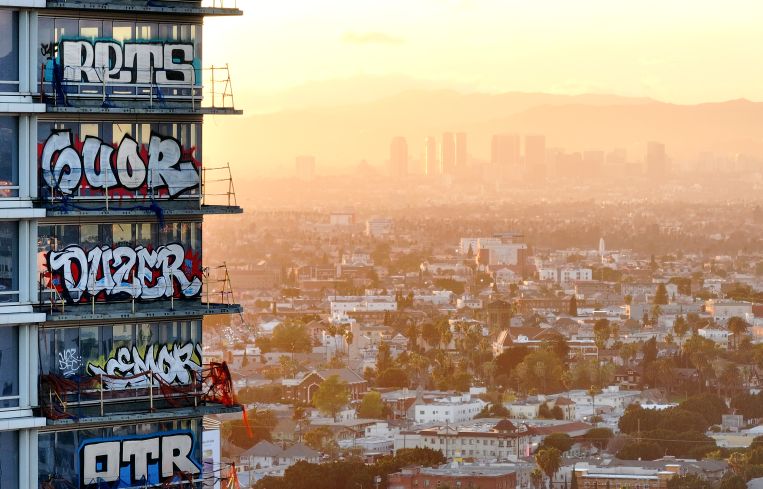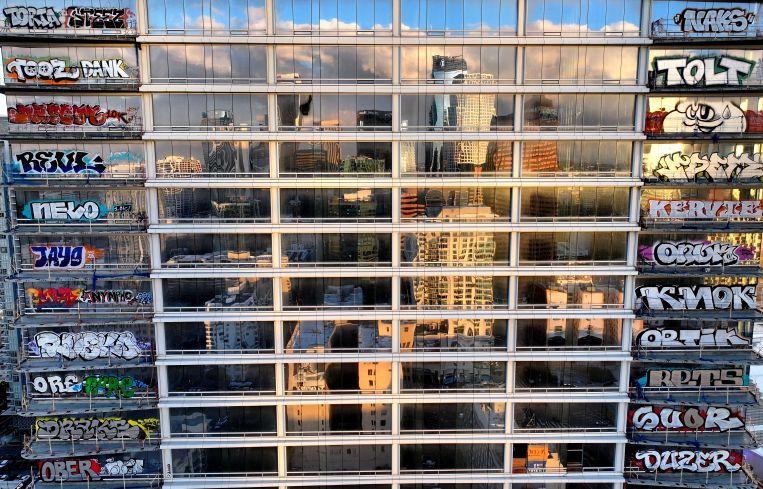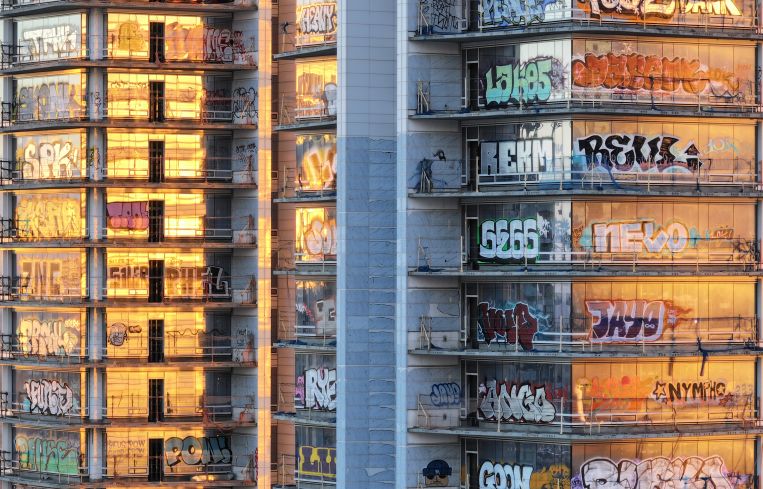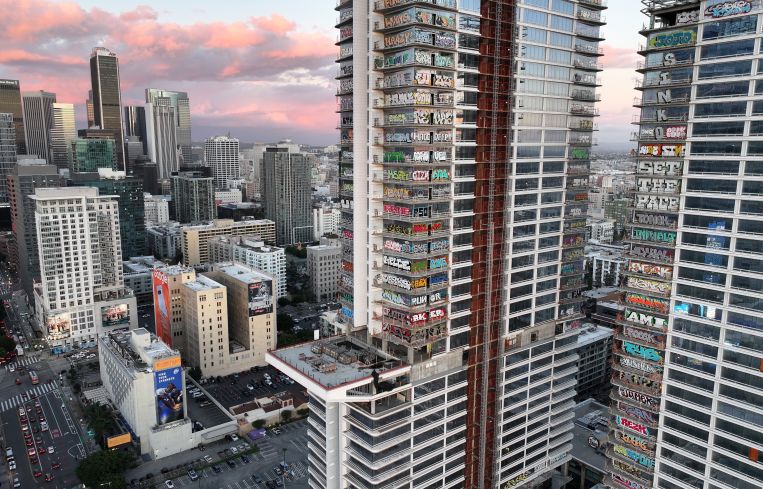L.A.’s Tagged Oceanwide Plaza Symbolizes Disconnect Between Housing Supply and Demand
By Michael Lucarelli February 23, 2024 10:35 am
reprints




The American dream of homeownership, once attainable for many, is slipping out of reach for countless individuals and families across the nation. As current mortgage rates hover around 7 percent, aspiring buyers find themselves priced out of the market.
Another way to view the recent market dynamics? A recent study by the Consumer Federation of America shows about half of real estate agents in the U.S. sold just one house or none at all last year.
This shifting dynamic in the for-sale market has propelled the rental segment to the forefront, where demand has arguably never been higher. According to data from the U.S. Census Bureau, over 35 percent of households in the United States now opt to rent their homes, a figure that rises to nearly 45 percent in California.
Yet, amid this surging demand, images of half-finished, graffiti-clad, high-end rental towers, such as the Oceanwide Plaza in Downtown Los Angeles, stand as bewildering symbols of the disconnect between supply and demand.
Rental affordability has reached crisis levels, with a recent report from the Joint Center for Housing Studies of Harvard University revealing that rents were considered unaffordable for a staggering 22.4 million households in 2022, an all-time high. Across the U.S., the average rent now stands at $1,957, marking a 3.3 percent increase from the previous year, according to a December rental report.
In the case of Oceanwide Plaza, part of the problem is due to specifics of the Chinese developer that abandoned ship in 2019; part of the problem is related to the decay of many downtowns, including in L.A.; and part of the problem is that much of the new rental product coming online is high end and not considered affordable.
Amid these challenges, the significance of mom-and-pop landlords cannot be overstated. These smaller-scale property owners, typically managing one to four units, often provide the more affordable housing option for many living in America. About 41 percent of residential rental units in the U.S. belong to mom-and-pop landlords, according to JPMorgan Chase.
In recognition of their importance, L.A. County launched a $46.3 million rent relief program at the end of last year, aimed at supporting landlords and tenants impacted by the economic repercussions of the COVID-19 pandemic. This initiative seeks to mitigate tenant evictions, sustain small-scale rental businesses, and ensure the availability of affordable housing in the county.
Addressing the challenges faced by small landlords is crucial, but additional solutions are needed to tackle the rental housing crisis on a broader scale. One promising avenue is the conversion of office spaces into apartment buildings. With many cities grappling with empty central business districts due to the rise of remote work, office-to-residential conversions present a potential solution. Though logistically challenging and costly, initiatives like the proposed Office to Housing Conversion Act in California aim to streamline the conversion process and ease the burden on developers.
It is evident that the demand for rental housing — particularly the housing considered more affordable — will continue to rise, with current mortgage rates and affordability issues showing no signs of abating. As such, any opportunity to provide relief for small landlords and expand the availability of rentals warrants exploration. Only by embracing innovative solutions and prioritizing the needs of renters and landlords alike, can the pressing housing shortage across the U.S. be addressed.
Michael Lucarelli is the CEO and co-founder of RentSpree.


